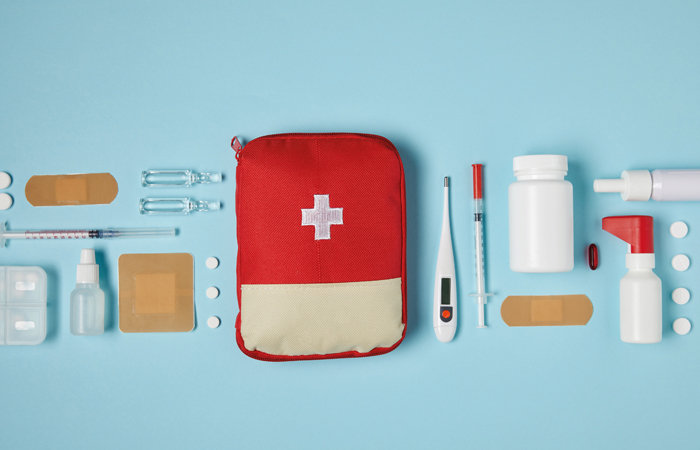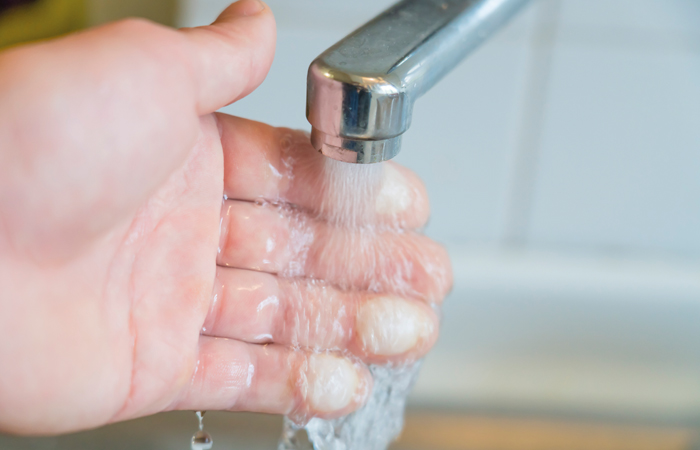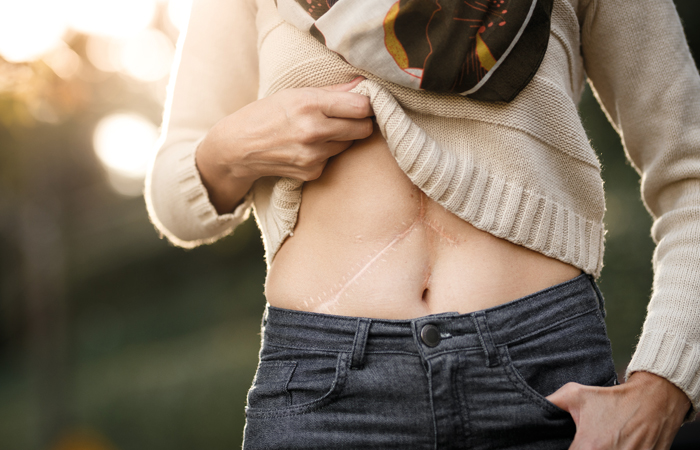Big little things
In Conditions
Follow this topic
Bookmark
Record learning outcomes
When it comes to first aid, pharmacy staff can be on hand to help inform customers of the best practices, what to do in an emergency and recommended the most appropriate products available for a whole host of minor first aid issues, as well as how to care for scars
The first aid category is a stalwart of the pharmacy shelves and the pharmacy is often the first port of call for customers preparing for, or dealing with, minor accidents and injuries. It’s therefore vital for pharmacy teams to have up-to-date knowledge of the types of products available and the advice that should be provided to help customers deal with these issues, as well as when to refer more serious cases for emergency care.

First things first
St John Ambulance’s head of clinical operations Alan Weir says pharmacy staff should inform the public about the first aid services and advice they can offer. “You are well trained and qualified to give advice and treatment for minor first aid issues. Customers will get seen far quicker than if they went to their GP or local A&E department.”
While many incidents can be dealt with quickly and efficiently in pharmacy, in some instances, there may be a need to call for urgent medical help. “Key cases that need urgent medical help are someone complaining of chest pains or someone who is showing the FAST signs of a possible stroke,” says Alan. “In these cases, time is of the essence, so call for help quickly.”
- Cuts and grazes
A cut is when the skin is fully broken, while a graze means just the top layers of skin have been scraped off.
The wound should be cleaned using water or alcohol-free wipes and patted dry, using a clean, non-fluffy cloth, before being covered with a sterile dressing. To stop any bleeding, the affected part of the body should be raised and once the bleeding has stopped, the dressing should be applied.
If the bleeding doesn’t stop, if there is something stuck in the wound or if there is risk of infection, the customer should be referred for medical help.
- Burns and scalds
A burn is caused by dry heat, such as fire, while a scald is caused by wet heat, such as steam. The most important action to take is to cool the affected area fast to minimise injury by holding it under cool running water for at least 10 minutes. It can then be covered with cling film or a clean plastic bag to protect skin from infection. For minor burns and scalds, paracetamol or ibuprofen can be recommended to ease pain. Customers should be referred for urgent medical help if: the burn is larger than their hand; it’s on their face, hands or feet; it is a deep burn; it was from an electrical source; or if the burn has blistered or looks infected.

- Bites and stings
A cold compress should be applied and the area should be raised immediately after a bite or sting to reduce swelling and irritation. If the sting is visible, it should be removed by brushing or scraping it off. An analgesic can be recommended to relieve any pain.
Itching from a bite or sting usually only lasts a few hours, but if it persists, there are a number of options for specific symptoms. Crotamiton ointment can soothe itching and a hydrocortisone cream will help more severe cases. To treat itching from lots of bites, an antihistamine tablet can be recommended.
In some people a sting can cause a serious allergic reaction, which needs urgent medical attention. Signs to watch for include breathing difficulties, reddened, swollen and very itchy skin.
- Allergic reactions
A severe allergic reaction can develop within minutes or seconds of someone coming into contact with an allergen, so it’s important to act fast. According to St John Ambulance, the key things to look out for are:
- Difficulty breathing
- Swelling of hands, feet or face
- Itchy or puffy eyes or nose
- Outbreak of blotchy skin
- Abdominal pain, vomiting and diarrhoea.
A customer needs emergency help if they have any of these signs. If the customer knows what their allergy is and has medication with them, this can be administered until help arrives.
A severe allergic reaction can develop within minutes or seconds
- Stroke
This occurs when blood supply to the brain is disrupted. It is an emergency and it is important to act FAST:
- Facial weakness. Look at the mouth and eyes, which may be droopy and unable to smile evenly
- Arm weakness. Ask them to raise both arms – they may only be able to raise one
- Speech problems. Unable to speak clearly or may not understand what is being said to them
- Time to call 999 or 112 for emergency help, telling them it’s a suspected stroke.
Caring for scars
A scar is a mark left on the skin after a wound or injury has healed. Research by Bio-Oil found that 47 per cent of patients are unsure how to look after their scars. “Many patients are discharged from medical facilities with limited advice on how to improve scar quality. Pharmacy staff are strategically placed within the primary care community to signpost patients to credible professionals and websites such as the British Skin Foundation,” says Dr Ioannis Goutos, plastic surgeon with specialist interest in scar management and British Skin Foundation spokesperson.
“Early intervention can make a significant difference to the final quality of a scar. Basic principles revolve around moisturisation, protection from the sun, as well as reduction of friction and stretch during the scar maturation phase,” Dr Goutos explains. “Protecting scars from the sun is especially vital, so recommend the use of high factor sunscreens and covering skin with clothing.”
There is evidence to suggest that massaging a scar can aid the healing process and relieve itching, however it needs to be done with care. “Traditionally, patients have been universally advised to massage scars vigorously and frequently, but there is emerging evidence that this practice can be counterproductive in fresh, red scars. It is now recommended that a qualified healthcare professional provides a tailored assessment and management plan regarding scar massage,” says Dr Goutos.
Keeping scar tissue moist and supple with a cream or oil on a daily basis will prevent it from drying out and ease itchiness, however this should only be done once initial healing has taken place. “Patients must ensure any wounds have healed before they apply any topical products. If a wound is still fresh, keeping it clean and dry will help prevent infection. If the scar isn’t healing, particularly if it is red and itching and becoming more pronounced, they should see their doctor,” advises Dr Justine Hextall, consultant dermatologist and specialist in the field of aesthetic dermatology.
47 per cent of patients are unsure how to look after their scars
Scars explained
“One in five pharmacists admit to feeling slightly uncomfortable discussing sensitive topics like scarring. Minor scars tend to be brushed aside, but they can affect patients psychologically, so it’s important to be able to support and proactively approach patients,” says Dr Hextall. “Reassure them that scars are extremely common and it’s something you’re used to seeing and advising on. Be positive and explain that scars almost always fade over time and that there are ways they can help improve their appearance.”

There are five main types of scar and each one needs to be treated differently:
Atrophic scar
These are pitted or sunken scars, often caused by conditions such as acne or chickenpox. “Acne is the commonest cause and early assessment and treatment by a dermatologist is essential,” says Dr Goutos. They can be treated with resurfacing techniques including lasers and needling, which can help flatten the scars, as well as stimulate collagen production in deeper layers of skin. Injections of fillers can also help to flatten scars. “A dipped scar can be brought to the surface by incising and lifting the skin,” says Dr Hextall.
Hypertrophic scar
These are caused by deep wounds and start off raised and red and then become flatter and paler over the course of several years. They may need corticosteroid injections to help reduce swelling and flatten the scar. Steroid-impregnated tape can be prescribed to help flatten scars and improve skin appearance.
Contracture scar
These are caused by burns and develop when the damaged skin shrinks. The degree of scarring will depend on severity of the burn. Pressure dressings are used for treating large burn scars and may be used with silicone gel sheeting. “In early and mild contractures, physical therapy with stretching or splinting, as well as specialist scar manipulation, can improve appearance of skin and function of affected area,” says Dr Goutos.
In long-standing and severe cases, laser treatment or surgery may be necessary. “Silicone gel dressings have been shown to help improve scar appearance but can cause irritation when used for long periods,” adds Dr Hextall.
Keloid scar
This is an overgrowth of scar tissue that develops around a wound when it has healed. They look red or purple when newly formed, then gradually fade. They may be itchy or painful at first. They can be treated with steroid plasters or injected with steroids, chemotherapy agents or Botox to stop the scar tissue growing. “Surgery and radiotherapy are the preferred option for bulky and wide keloid scars, offering the best long-term outcome,” says Dr Goutos. Silicone gels are also available.
Striae scar
These are stretch marks, which appear when skin suddenly stretches due to rapid weight gain, pregnancy or growth spurts. The dermis breaks and deeper layers show through. Striae change from red or purple to silvery white lines over time. “Keeping skin hydrated during pregnancy, avoiding rapid weight gain and maximising skin elasticity may help but are unlikely to completely prevent striae. Patients can massage a specialist skin oil or cream into abdomen, breasts and hips twice daily from start of second trimester,” advises Dr Hextall. Laser therapy and microneedling are also options that may help improve appearance.
